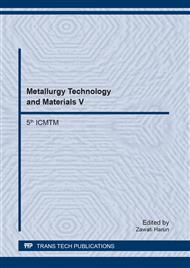p.61
p.68
p.75
p.80
p.85
p.93
p.98
p.102
p.107
Biocompatibility of Titanium Carbo-Nitride Coatings with Fetal Rat Calvarial Cells
Abstract:
Surface modification is a promising technique to improve mechanical properties of titanium and titanium alloys by changing the surface composition or microstructures. In this study, titanium carbo-nitride coating had been deposited on Ti-6Al-4V alloy by arc ion plating. The biocompatibility of TiN and TiCN coating on Ti-6Al-4V alloy with fetal rat calvarial cells was assessed by Enzyme Linked Immunoabsorbent Assay (ELISA) and Alkaline phosphatase (ALPase) activity. The effect of surface coating on IL-1β and IL-6 production was determined by ELISA. On IL-1β and IL-6 production, there were no statistical difference between control and thin coating surfaces. After 7 days of culture, the cells were provided to measure ALPase activity. ALPase activity of cells cultured on TiN and TiCN surface was similar to that seen on cp-Ti.
Info:
Periodical:
Pages:
85-89
Citation:
Online since:
August 2017
Authors:
Price:
Сopyright:
© 2017 Trans Tech Publications Ltd. All Rights Reserved
Share:
Citation:


